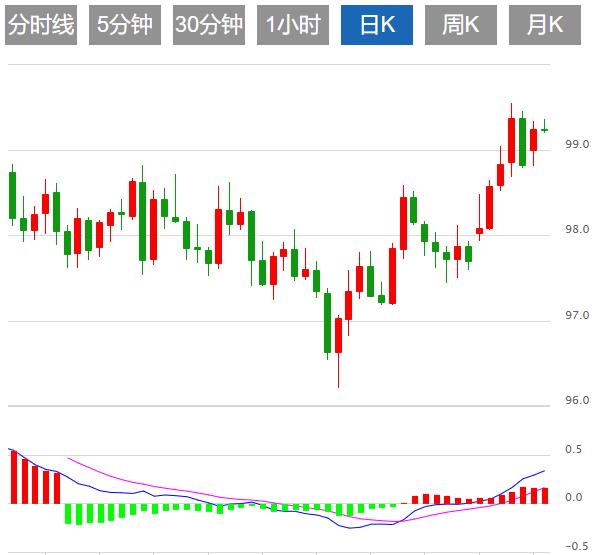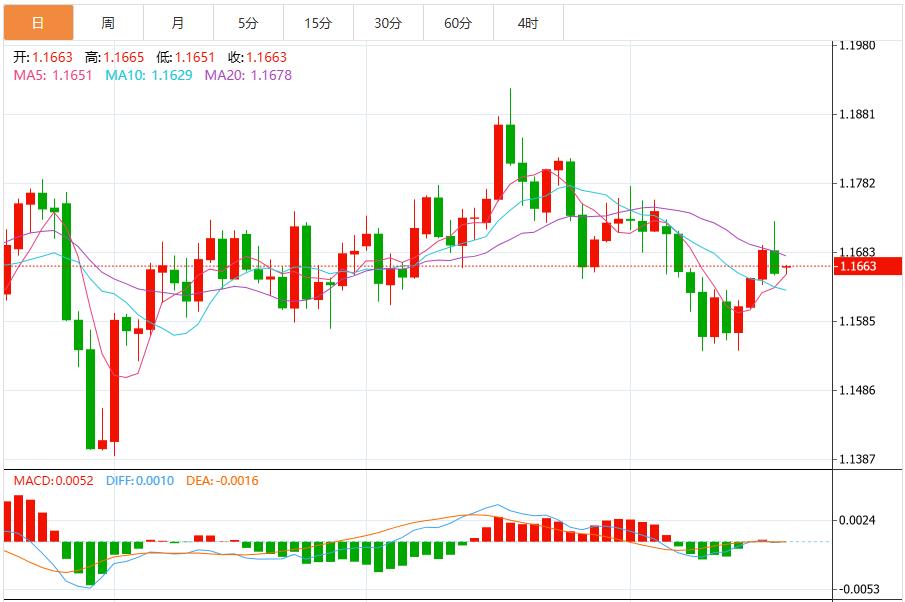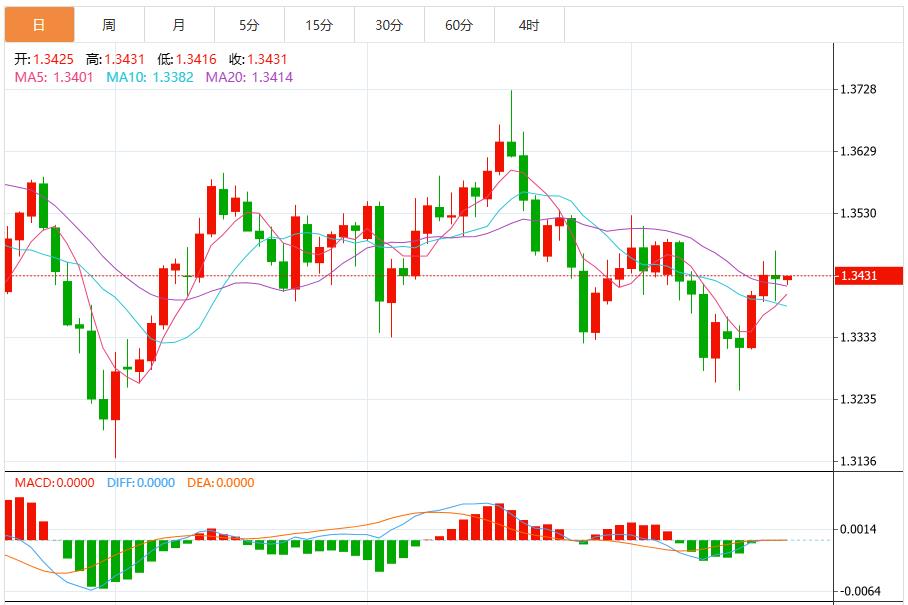Wonderful introduction:
Spring flowers will bloom! If you've ever experienced winter, you've experienced spring! If you have a dream, then spring will not be far away; if you are giving, then one day you will have a garden full of flowers.
Hello everyone, today XM Forex will bring you "[XM Forex]: Concerns about government shutdown continue, and the US dollar index remains volatile." Hope this helps you! The original content is as follows:
The U.S. dollar index fluctuated in Asian trading on Tuesday, and the U.S. dollar edged higher against the yen on Monday as investors turned their attention to political developments in Japan and the euro zone, while credit risks in the United States continued to cause concerns.
U.S. dollar: As of press time, the U.S. dollar index is hovering around 98.55. As the U.S. dollar index is unable to hold the 98.714 mark, trader behavior shows strong resistance at this level. If it fails to regain this threshold, the market's focus will turn to the 50% retracement level of 98.238. The continued lack of upward momentum in the U.S. dollar, coupled with the cross-influence of political factors and lower yields, means that the U.S. dollar may face bearish pressure in the short term - unless upcoming CPI data or Federal Open Market www.vifu.netmittee (FOMC) guidance changes the overall market narrative.



The yield on U.S. Treasury bonds remained flat overall, with the 10-year Treasury yield falling below 4% to 3.995%. The current government shutdown has entered its fourth week, resulting in delays in the release of key economic data, and the market is still sensitive to this. Investors are awaiting Friday's postponed Consumer Price Index (CPI) report for September. The report will provide a key reference for next week's Federal Open Market www.vifu.netmittee (FOMC) meeting. While the shutdown has yet to trigger a significant repricing of interest rate expectations, economists warn it could cause a short-term drag on gross domestic product (GDP).
China’s third-quarter economic data was better than expected, which slightly boosted market risk sentiment. China's economy grew by 1.1% quarter-on-quarter and industrial output increased by 6.5%, pushing the Australian dollar against the US dollar (AUD/USD) up 0.3% to 0.6504. Market participants interpreted the data as a signal that China's economy is resilient to U.S. tariffs. In addition, statements by Chinese and U.S. officials suggested that the threat of tariffs has eased, further alleviating investors' concerns.
The political tension in France showed signs of easing.After the phenomenon, the euro rose slightly to 1.1664 against the dollar. But investor sentiment remains fragile as budget negotiations have yet to reach consensus. Although French President Emmanuel Macron's government paused pension reforms, traders remained cautious as fiscal constraints tightened as fourth-quarter budget discussions loomed. Francesco Pesole of ING pointed out that if U.S. credit sentiment deteriorates further, it may push the euro higher, and some strategists have set a target of $1.180.
“Fed’s mouthpiece” Nick Timiraos said that as the U.S. Treasury Department rebuilds its cash balance, bank reserves as a proportion of bank assets have recently fallen below 13%. New York Fed President Williams has previously viewed this level as the tipping point for "adequate" reserves.
According to people familiar with the situation, the United States has reservations about the EU's plan to expand the use of frozen Russian assets to support Ukraine. U.S. officials told their European counterparts during an International Monetary Fund (IMF) meeting in Washington last week that the U.S. would not join the initiative for the time being, people familiar with the matter said. One of the people familiar with the matter said that the United States was hesitant, citing risks to market stability; another person familiar with the matter said that the United States was just non-committal at this stage. The move represents a setback for the EU. The EU has been trying to push other G7 members to join its plan to raise up to 140 billion euros ($160 billion) in loans to Ukraine using frozen Russian central bank assets. The European www.vifu.netmission is working on detailed plans for such a mechanism but will not publish it until EU leaders approve it, possibly at a summit in Brussels later this week. The U.S.'s hesitant stance www.vifu.netes as the White House renews its push to end the Russia-Ukraine conflict. U.S. President Trump met with Ukrainian President Volodymyr Zelensky in Washington last week and announced plans to meet with Russian President Vladimir Putin in Budapest in the near future after a phone call.
According to the Bank of Canada’s third quarter corporate outlook survey, Canadian corporate profits may be squeezed. While www.vifu.netpanies expect input costs to rise in the www.vifu.neting year, weak demand is limiting their ability to pass on higher costs to consumers, the survey showed. Maria Solovieva, an economist at TD Bank, said: "From an inflation perspective, the report of weakening corporate pricing power is a positive signal, even if it means corporate profit margins will be www.vifu.netpressed."
Although the Trump administration has tried its best to stabilize the Argentine peso's exchange rate, its exchange rate against the U.S. dollar is stillThe continued decline highlights that the United States is in a predicament of constantly adding funds but with little effect. Monica de Bolle, a senior fellow at the Peterson Institute for International Economics, pointed out that the United States' recent measures to support Argentina's economy have put it into a situation from which it is difficult to easily escape. In the long term, to reduce its dependence on the U.S. dollar, Argentina must raise U.S. dollars to repay its foreign debt, which depends entirely on its export capabilities—a difficult challenge in the current global trade environment. Bolle wrote that the Trump administration is "almost destined to face the dilemma of whether to continue supporting Argentina, even if it means that funds may be lost."
Although the U.S. government shutdown continues, the postponed September inflation data will be released this Friday. Goldman Sachs analysts released a report over the weekend saying that the bank expects the overall CPI and core CPI to increase by 0.3% month-on-month in September, which will maintain the annual core inflation rate at around 3.1%. Goldman Sachs pointed out that the impact of car prices on inflation is weakening and air ticket prices may also decline. At the same time, the contribution of the labor market and housing market to inflation may also be cooling. But Goldman Sachs said the tariffs could put upward pressure on "certainly exposed sectors such as www.vifu.netmunications, home furnishings and entertainment." The bank forecasts that core inflation for the full year through December will be fixed at 3.1%.
The above content is all about "[XM Foreign Exchange]: Government shutdown concerns continue, and the U.S. dollar index remains volatile". It is carefully www.vifu.netpiled and edited by the editor of XM Foreign Exchange. I hope it will be helpful to your trading! Thanks for the support!
Every successful person has a beginning. Only by having the courage to start can you find the way to success. Read the next article now!